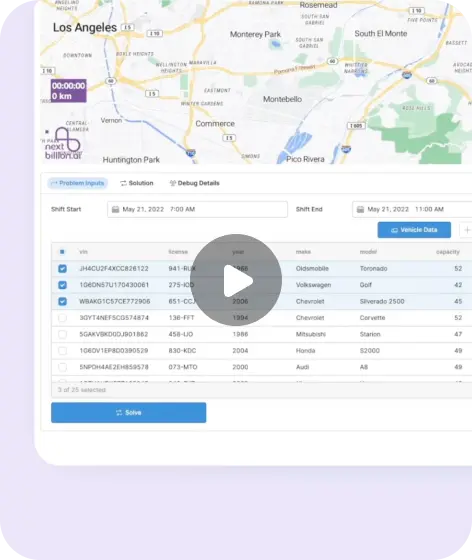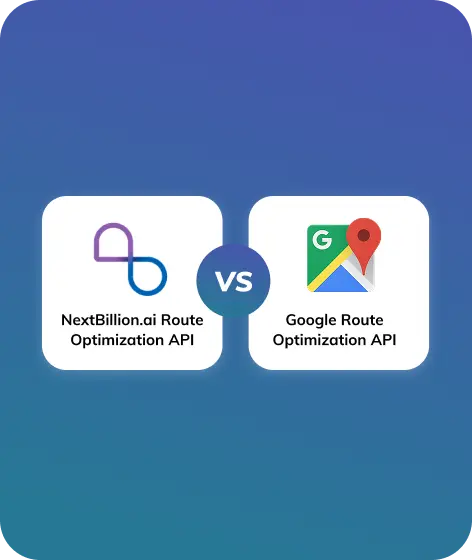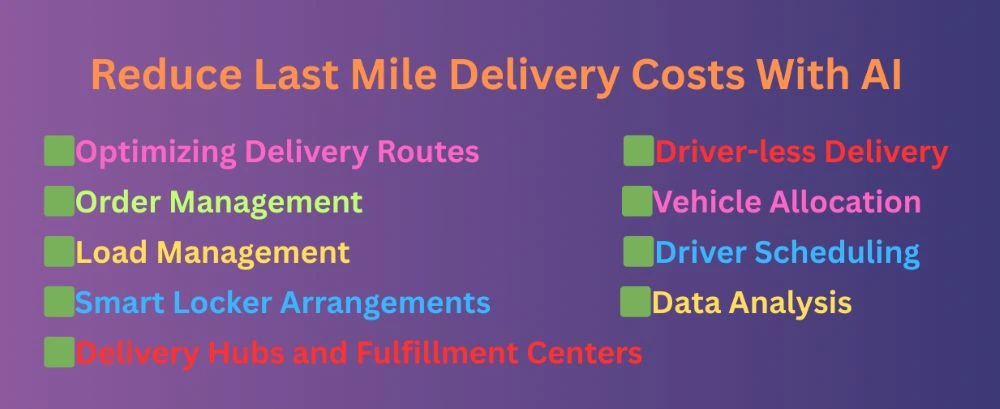
Table of Contents
Is your logistics and transport company experiencing challenges with high parcel delivery charges? Is it becoming difficult to minimize the delivery costs while keeping the customers satisfied?
The struggle to deal with endpoint transit is genuine and globally recognized. A study conducted on e-commerce business reports a 12% increase in last mile delivery costs between 2018 and 2023. It accounts for almost 53% of the shipping expenses.
Also read: Top last-mile delivery statistics in 2025.
There are navigation tools that can resolve the problem to some extent. But the latest development in AI technology has the capacity to process more insights from the database and bring down the final delivery expenses by 50%. This article explains the 9 most impactful ways by which AI reduces the last-mile delivery costs.
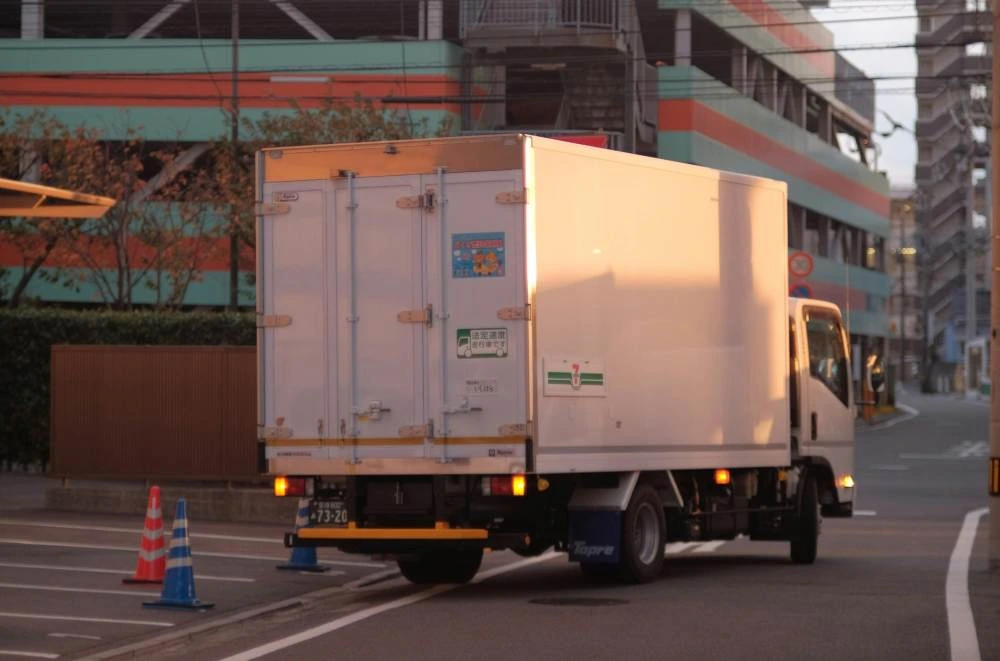
A Brief on Last Mile Delivery
The logistics and transport business firms handle the responsibility of picking up the order from the store or client. They make sure to deliver the order safely to the recipient within the scheduled time.
Last mile delivery, as it is named, is the last step of the entire transit process. It is crucial because it builds customer relationships. Some of its prominent impacts include scheduled delivery with real-time tracking and the assurance of receiving it on the doorstep.
Once an order is placed by a customer, it is taken to the warehouse for further load management procedures. The delivery drivers receive an optimized route plan, which they follow to fulfill the last mile delivery.
Theoretically, the final delivery of the product is a synchronized process with swift channeling. However, the real challenge lies with the delivery drivers on the field. They had to deal with issues like traffic, vehicle capacity, or a jumbled road network, which perpetually increased the traveling and overall expenditure.
What are the Difficulties in Managing Last Mile Delivery Costs?
Last-mile delivery is always a matter of concern for the courier companies. Quick service with cost-effective modes is the primary goal of a logistics company, which eventually satisfies the customers.
There are numerous factors involved in the successful and efficient delivery of goods to their destination. Let’s see why it is challenging to regulate the price paid in the process.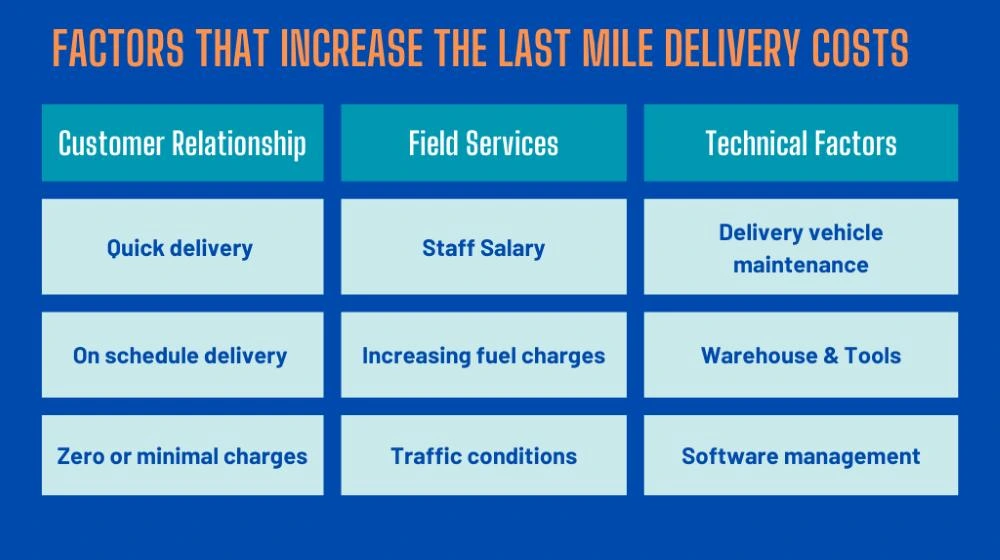
Factors relevant to the customers:
Inefficient delivery service annoys the customers and loses their trust. Hence, it is essential to fulfill their demands.
Quick transit: It is primarily required for the courier companies to ensure that the ordered goods reach the destination as quickly as possible.
Scheduled delivery: Customers expect to receive the parcels at the scheduled time. Delays may also lead to return requests or poor ratings on the internet. Such actions will negatively affect the future purchases.
Minimal delivery charges: Buyers are usually not willing to pay extra charges for goods transportation. Therefore, the transport companies have less margin to manage the last mile delivery and maintain profitability.
Field Services:
The field service operations executed by the drivers and attendants directly impacts the last mile delivery costs.
Delivery staff: You need to hire a sufficient number of drivers and supporting staff to regularly furnish the transportation jobs. Depending upon the vehicle types, you should have drivers with expertise, as well as suitable replacements for multiple shifts or emergencies. It definitely increases the costs involved in the delivery process.

Traffic on the route: There are peak hours when specific areas witness traffic rush, and it is difficult for drivers to decide the best possible path for movement. Stuck in traffic can result in fewer deliveries and increase the cost of another shift. Besides the benefits, there are other potential charges associated with integrating software solutions.
Technical factors:
Inadequate use of technological tools or equipment for fulfilling last mile deliveries may increase the costs included.
Delivery vehicles: These are essential to furnish the job, and with the expansion of the network or customers ordering deliveries, you are required to integrate more such vehicles into the fleet. Regular maintenance and servicing can significantly impact your financial budget.
Warehouse and tools: Depending upon the services offered by your transport company, it is evident that you need to rent storage stations in specific areas. Along with that, you also need to arrange a basic setup and the necessary tools to manage the goods.
Software management: Competing in the transit business and satisfying consumers with your services can be challenging. You necessarily need software automation and an advanced AI-enabled solution to manage transportation. Although technology integration inevitably incurs costs, it can significantly reduce the cost of last mile delivery services.
How AI Proves to be the Solution for Last Mile Delivery Cost Reduction?
Artificial intelligence has the capacity to transform the goods delivery process with an efficient output. AI can assist you to optimize various parameters of last mile delivery to adaptively control the cost structure.
Earlier technological tools faced limitations in route planning due to a lack of real-time data accessibility, such as traffic or roadblocks. But the latest developments in machine learning and data processing techniques have enhanced the processing power of AI to work credibly in route management. It serves effectively with multiple benefits.
1. Optimizing Delivery Routes:
Route planning is an essential component of a transportation software application. Manual route assessment is difficult for a long list of deliverables, while old software solutions are least effective in real-time condition evaluation.
How AI works?
The latest tools in this segment are leveraging AI technology to garner highly efficient routes for the delivery vehicles. Once integrated with the database, these APIs use predictive analytics on real-time data to reroute drivers based on the current situation.
It can handle large amounts of data, such as traffic conditions, delivery locations, dense spots, congestion slots, time windows, fuel stations, etc.
The AI-enabled route optimization tool significantly reduces the last mile delivery costs by speeding up the delivery process and saving time and fuel consumption.
2. Driver-less Delivery:
Driverless vehicles is an ambitious project of global automotive brands. AI technology is highly advantageous for this sector, as the improved versions are now running peacefully on the road networks.
How AI works?
Logistics companies are now analyzing its feasibility in delivering goods to the remote or inaccessible areas. Drones are quite popular for sending small boxes directly to the location with zero effect from traffic or other hindrances. On the other hand, auto-driven vehicles can operate 24/7.
You must specifically allocate funds for the arrangement of such vehicles. But in the long run, AI technology saves the recurring amount paid for the driver’s salary, insurance, or other expenses, and it streamlines the delivery process with minimal human intervention.
3. Order Management:
The courier companies have warehouses or storage centers in different regions to collect the packages before last mile delivery. It is quite a tedious job to analyze the delivery schedule dates and location and arrange them accordingly for pickup.
How AI works?
AI tools quickly process the chunk of information relative to the package delivery and assist the team in picking packages as per the delivery schedules or the routes. It lets you group the set of orders for a particular delivery date, time slot, or area.
AI assistance quickens the job and reduces staffing needs to manage the orders. It also negates the chance of missing out on scheduled deliveries due to human errors, which ultimately secures the company’s rating or losses due to order cancellation.
4. Vehicle Allocation:
Upon receiving goods for final delivery, the storage centers generate sets of orders for specific delivery routes. Imagine different types of delivery boxes scheduled for the same date. For example, a few small boxes for route A, a large and heavy box scheduled for the same route, a bulk of orders for route B, and different shapes or sizes of boxes on other routes.
Manually doing the job may take hours, considering several permutations and combinations, to manage these carriers accurately. It is difficult to decide and move with one large wagon or three small-sized two-wheelers or vans.
How AI works?
AI takes no time in effectively managing the goods for transport. These tools are intelligent enough to analyze the possible route plans and assign delivery bikers, vans, or trucks to fulfill last mile delivery tasks.
This innovative ideation saves time and money by keeping minimal staff involved and efficiently allocating vehicles.
It is a winning situation for both the transportation and loading departments because the best choice of trucks or bikes will furnish the job on specific routes. Usage of AI in the process reduces fuel consumption and initiates movements sooner by saving the driver’s standby time. Additionally, companies can offer white glove delivery services to customers at a lower cost.
5. Load Management:
Another issue after vehicle allocation is arranging the load or packages in a way that everything fits in conveniently. But the managers must also ensure that these boxes are not lost in the bunch and can be easily searched during drop-offs.
How AI works?
With AI working in the background, you only need to enter the details of available vehicles and generate the most optimized loading plans for each of them. It will consider box size, weight, fragility, delivery location for quick pick, and other such factors and provide instruction to arrange the boxes sequentially that eases the job.
This evidently saves loading time and excessive labor costs and ensures successful last mile delivery. It also keeps empty space for any package pickups on the route so that drivers do not have to waste time in setup.
6. Driver Scheduling:
Medium- to large-sized transit companies employ a pool of drivers with expertise in handling different vehicles or driving in specific conditions. Delivery managers assign the task to these drivers each time after assessing their caliber and shifts. They need to ensure not to overpressure one person with successive delivery schedules without rest or appear as biased by offering a job to a certain group.
How AI works?
AI-enabled tools assess multiple parameters about each driver in the fleet. The attendance management keeps the system updated with the list of drivers on the roll. Now according to the delivery requirements and driver’s skills, and considering other factors, the tool assigns tasks.
Integrating AI mechanisms for driver scheduling ensures the most efficient and best-fit team member receives the assignment. It is a guarantee that the last mile delivery job gets completed at the most efficient and affordable price.
7. Delivery Hubs and Fulfillment Centers:
Usually, a zone has a single delivery hub with multiple fulfillment centers from where the last mile delivery tasks are executed. While you can randomly create fulfillment centers across the city, the decision may not be feasible in every situation.
How AI works?
You can use AI to find out the most suitable spots on the map for installing a data center. After reviewing the highest number of orders and the type of products purchased, the AI tool can suggest delivery center locations that are closer and easily accessible through different categories of vehicles.
It will significantly reduce the last mile delivery charges because now the drivers get a closed area for task completion. It lowers fuel consumption with fewer vehicles or staff in the team.
8. Data Analysis:
There is usually a buying season for customers when they tend to make bulk purchases. Even inactive users place orders after a prolonged period and anticipate top-notch delivery services from the transport company. It is difficult to predict which regions have maximum purchases for delivery.
How AI works?
AI tools are capable of forecasting demands precisely to report the seasons that fetch higher purchases and times of stagnancy. It helps the courier companies to stay prepared and hire extra staff during rush or deploy a small team during the off season.
It streamlines tasks during high sales periods and reduces the unnecessary expenditure on standby staff during the off-season when there are fewer deliveries. They can also rent vehicles in specific seasons or earn extra money by putting their fleet on rent when not in use.
9. Smart Locker Arrangements:
The delivery agents often have to invest extra time for last mile deliveries on off routes or during unavailability of the customer. It also affects other orders in the queue and thus successful task completion.
To deal with such unusual situations, the logistics companies seek smart locker arrangements at specific points in the area. The concept is that the transporters will drop off the parcel in the lockers for a particular customer, who can pick it up as per their convenience. The lockers should be easily accessible by both customers and drivers.
How AI works?
An AI-enabled system can effectively optimize the desired locations for smart lockers. It considers different parameters of delivery trends, catering to congested zones where door-to-door reach out is difficult for delivery drivers, etc.
Here the purpose is genuinely to serve the customers for the highest satisfaction, ensure task completion within the allotted time, and reduce traveling costs when it is not required or can be avoided without annoying the receiving end. AI enables finding the best placement for smart lockers to get efficient output and thus cuts down on last mile delivery expenditures.
How does NextBillion.ai apply AI to Reduce Last Mile Delivery Costs?
NextBillion.ai is an expert in enhancing location technology with its AI-powered smart solutions. They offer advanced API and SDK products to swiftly integrate with the ERP system and empower businesses with optimized routes, efficient logistics management, and seamless transportation guidelines
The wide range of tools is equipped with advanced algorithms and AI technology to manage supply chains, people mobility, and stress-free last mile delivery operations.
✨NextBillion ensures trusted, on-time, and cost-effective last-mile deliveries with optimized route plans for specific vehicle allocation and customized cost matrices.
✨The algorithms can dynamically re-optimize the route plans in case of last-minute order cancellation, vehicle breakdown, or high-priority goods transport.
✨It helps in accurately planning the capacity to deliver couriers in a single shift or analyzing their placements in the carriers. The tool facilitates multiple simulations with no extra charges.
✨It utilizes artificial intelligence to cluster the tasks zone-wise by factoring different parameters like distance between drop locations, traffic patterns, preferences, route overlaps, etc. This is highly effective in cost-cutting while finishing last mile deliveries.
✨You can track the vehicle’s movements and ETAs in real-time and share the details with the customers to keep alert and available for receiving the parcel.
By incorporating NextBillion’s last mile delivery feature, you can address a wide spectrum of services such as the fastest grocery delivery, capacity planning for new and existing tasks, goods return on the same fleet, or adding ad-hoc tasks due to sudden changes.
Drivers are also facilitated with a complimentary Driver’s App for both Android or iOS device. It is a multipurpose app with real-time navigation and route alteration that are quite helpful job completion through efficient modes. Additionally, you can utilize the MapFusion tool to customize the map data and enable route plans that reflect your edited constraints.
Final Words
Courier companies are now advancing toward AI technology to leverage its benefits in last-mile delivery services. AI has been advantageous in enhancing the routing experience but requires precise implementation with the adaptation of machine learning and data analysis.
NextBillion.ai regularly updates the APIs with the latest advancements in artificial intelligence and ensures to generate maximum output for the logistics sector. Our last mile delivery support is value for money and delivers instructions after considering more than 50 constraints on the dashboard.
About Author
Nitesh Malviya
Nitesh Malviya is a research-oriented professional with a background in Computer Science & Engineering. He served for 7 years as a software consultant and wrote passively in the tech niche before becoming a full-time technical writer.


